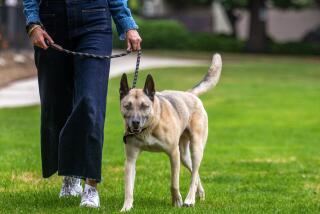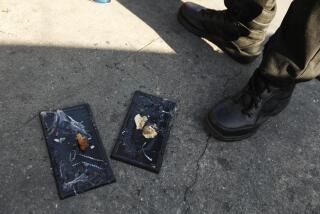Dog bowl and household items make for a better bed bug trap

Scientists have taken an Ikea dog bowl, leather dye, surgical tape, yeast and sugar and built a better bed bug trap.
Changlu Wang, a Rutgers University entomologist, started to battle Cimex lectularius in 2006, and has a patent pending on a type of lure that is among a handful now in commercial and consumer use.
But Wang and his colleagues wanted to solve several shortcomings of the devices -- among them, the price and effectiveness.
“It was very cheap, actually,” Wang said of the resulting contraption. “It probably will cost less than $1. You can make it yourself.”
Bed bugs love animal blood. And like mosquitoes, they sense a breathing animal by the carbon dioxide it exhales.
“The carbon dioxide makes them excited,” said Wang, who has breathed on lethargic bed bugs many times in his laboratory. “It looks like they are sleeping, they are motionless. But once you breathe, you gently breathe, you can watch: They move suddenly. They realize the host is present and start looking around.”
Inventors and researchers have used cylinders and dry ice as carbon dioxide sources. They also have taken advantage of other behavioral characteristics of the bugs -- they like the dark, so black surfaces seem to work well. And if the critters drop into a moat of a certain height, like the pitfall created by an inverted dog bowl, they can’t escape.
But cylinders are clunky, potentially dangerous, and costly, and dry ice is not widely available. So Wang borrowed from brew masters and bakers: Yeast and sugar will provide a steady supply of carbon dioxide. It’s a method that’s been used to attract malaria-bearing mosquitoes.
The Rutgers researches covered the outside of the dog bowls with surgical tape that was dyed black, and coated the inside surfaces with sticky resin to trap the pests, then inverted the dog dishes on trays. They tested them with and without a chemical lure made from nonanaldehyde, 1-octen-3-ol (also known as mushroom alcohol), spearmint oil and coriander oil.
The new device caught more than twice the number of bugs as the brand on which Wang has a patent pending. And the addition of the bait nearly doubled the success rate, compared with traps that lacked the chemical. There was no difference between traps that used the brewer’s concoction and other means of generating carbon dioxide, according to the study, which was published Tuesday in the Journal of Economic Entomology.
Once associated with transient housing and developing countries, bed bug infestations began to be reported around 2001, predominantly at U.S. hotels catering to international guests. But the phenomenon captured widespread public attention in 2010, when the insects caused Nike to shut down its flagship Niketown store in Manhattan. The pests also were found in the Dag Hammarskjold Library of the United Nations, the Empire State Building and a Bloomingdale’s department store. Reports of infestations in hotels, apartments and other lodging soon became widespread.
Although their bite is a nuisance and scratching the resulting welt can cause an infection, the bugs are not known to spread disease and are not considered a health threat, according to the Centers for Disease Control.
Researchers at UC Irvine and the University of Kentucky have been studying a trapping method that would mimic the kidney bean leaf, which is armed with sharp microscopic hairs called trichomes that effectively snag the bugs. The results so far have been mixed.







